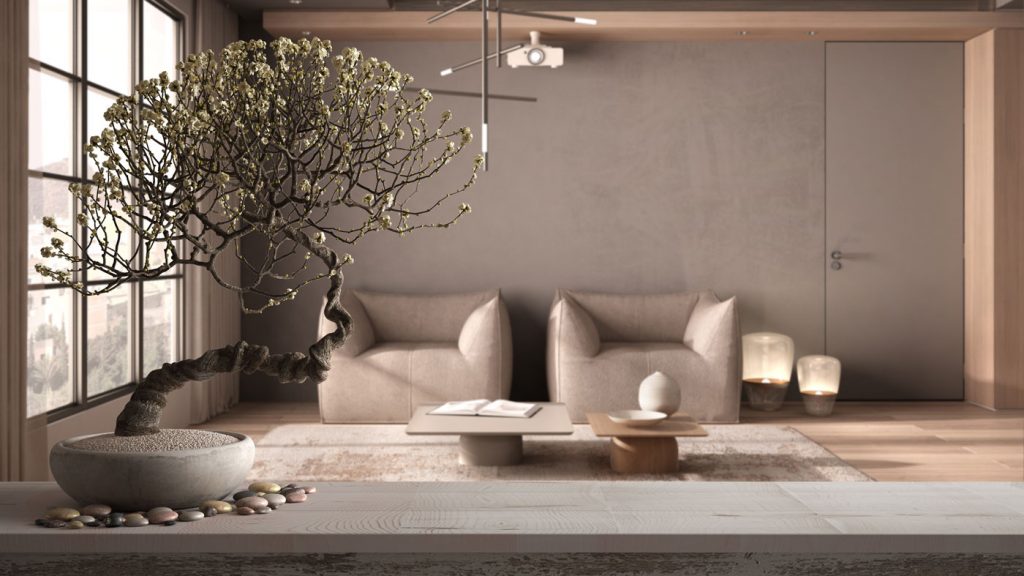The secrets of feng shui
When people talk feng shui and trying to make sure their home has the right balance or Qi, do we really know what that means?

When people talk feng shui and trying to make sure their home has the right balance or Qi, do we really know what that means?

Although Feng Shui has been practiced in the Eastern hemisphere for thousands of years, it is relatively new to western civilization. Feng Shui may seem mysterious and foreign to our western culture, but it is actually a very sensible collection of ideas and actions. Once you understand its principles, you will be able to produce harmony, comfort and balance in almost any situation or environment.

Feng shui is an ancient art and science that was developed over 3,000 years ago in China.
The Chinese words “feng” and “shui” translate to mean “wind” and “water,” respectively. This concept derived from an ancient poem that talks about human life being connected and flowing with the environment around it. In Chinese culture, wind and water are both associated with good health.
Thus, feng shui came to mean good fortune. In Asian culture, this philosophy is called the Tao, which translates to mean “the way.” Taoism is the way of nature and all the basic principles of feng shui reflect nature. Based on the Taoist vision and understanding of nature, the idea that land is alive and filled with energy, is called Qi.
Feng shui is essentially the interaction of humans and their environments. It enables you to influence these interacting energies to achieve specific life improvements. This influence is gained by positioning or designing your surroundings in harmony with principles of natural energy flow.
In order to allow Qi to flow effortlessly through your home, feng shui has quite a number of principles to follow, from dictating the precise places to set your furniture (never put a bed under a window!) to stipulating what color to paint your front door (it depends on which cardinal direction it faces). While different feng shui schools offer many variations on these principles, here are several commonalities that form the basis of the philosophy.
Feng shui is made of some basic principles which are the commanding position, the bagua, and the five elements.
Feng Shui uses a concept called the “Command Position” to help you take charge of your life and feel secure in your space.
Consider the seat you’re most likely to choose in a restaurant: across the room from the entry, with your back to a wall and at a slight angle, giving you a comfortable view of people coming in as well as your fellow diners. When you’re in the Command Position you can easily see the entry to your space, and have the best visual control over your space.
Before you can concentrate on things like improving your relationships or your finances, you need to feel that you and your loved ones are as safe as possible. The Command Position puts you in the best position to deal with whatever might be coming through the door and into your life.
The commanding position is the spot in a room that is the furthest from the door and not in direct line with it. It puts you diagonal to the door. Ideally, you should have a clear line of sight to the door.
The commanding position is where you want to spend most of your time when you are in that room. Feng shui guidelines suggest you determine this dominant position in the room, then place your bed, your desk, or your stove in diagonal alignment, if you can. These three parts of your house are critical since each represents an essential part of your life. The bed stands for you, the desk is an extension of your career, and the stove represents your wealth and nourishment.
The bagua is the feng shui energy map. It is one of the main principles of feng shui practice and one of the most powerful tools we use. The bagua offers a systematic way to evaluate the energy field of your environment. In general, the bagua is an energy grid that you can lay over a floor plan. Most often, you would lay this over the entire home (the main floor plan).
What most people don’t know is that the bagua is a conceptual map that can be superimposed over not only your entire home, but also a single room, your bedroom or office, a desk, or even your face. Or your property, your block, your town and beyond as it gets larger. The energy grid shrinks and expands, but it always remains in an equally proportioned three-by-three grid (like a tic-tac-toe board). The Chinese word “bagua” translates to mean “eight areas.”
Each of the eight areas relates to a different life circumstance, such as family, wealth, or career. And, each of these areas has corresponding shapes, colors, seasons, number, and earthly elements. At the center of the bagua—a ninth area—is you, representing your overall wellness.
The five elements—earth, metal, water, wood, and fire—come from the Taoist tradition. The elements are five interrelated phases in life that work together to create a complete system. Typically, the practice of feng shui works to balance these five facets in your home and each of your life areas or bagua.
To incorporate the elements in your life and your home, you have to define where you want to focus your energy. Much like the bagua, you choose the one to three areas of your life you want to improve. Then, you strengthen your energy and your home’s energy by adding the suggested colors or shapes in that room.
